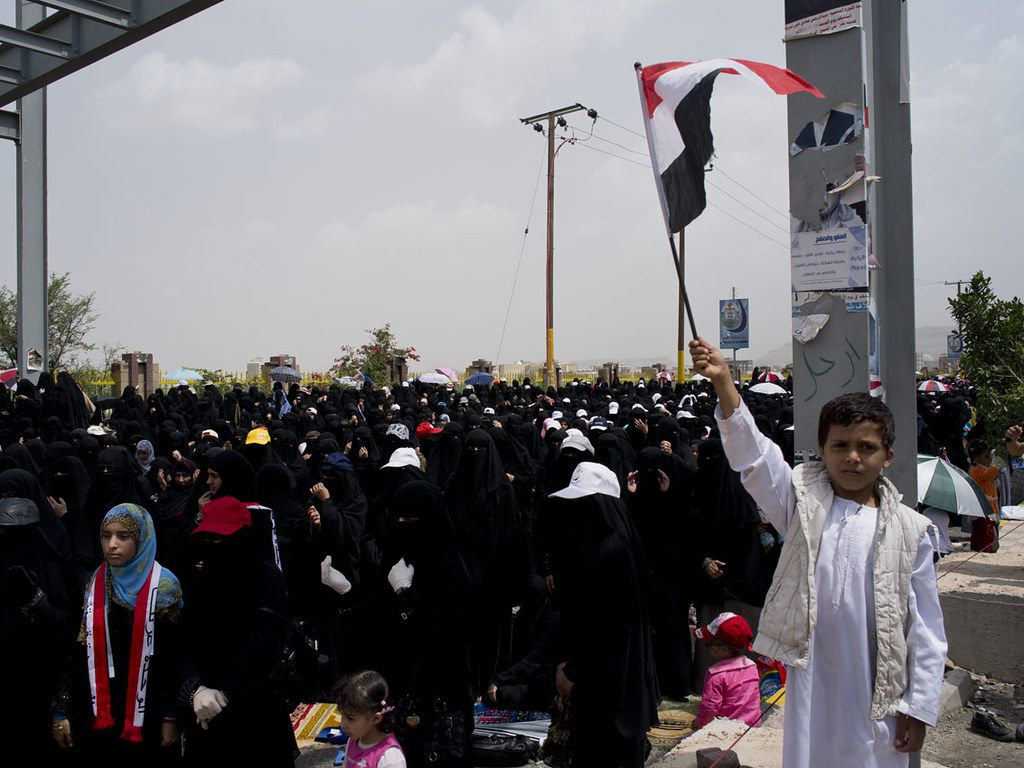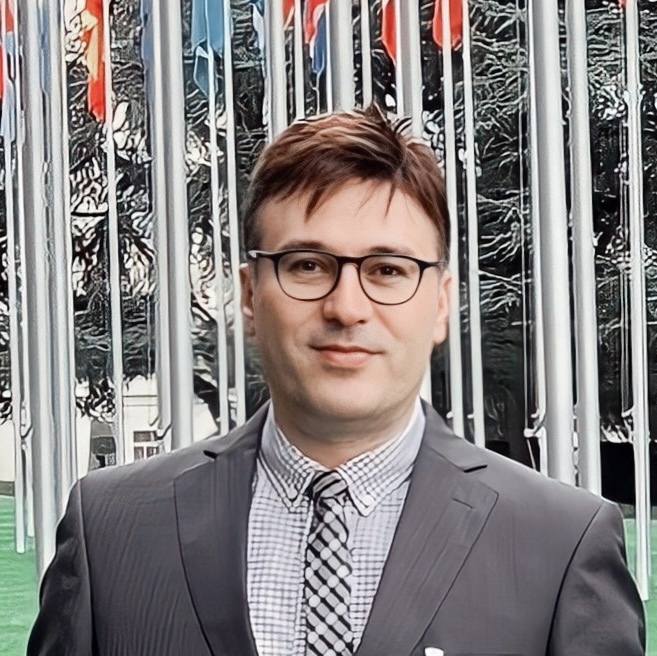The Houthi-Yemen Special Agreement and International Humanitarian Law

Published by The Lawfare Institute
in Cooperation With

On July 22, the Yemeni government concluded a new special agreement with the Shiite Islamist political and military organization known as the Houthis. The agreement arose out of a constructive dialogue between the two parties, which sought to pursue a common goal of ending the decade-long conflict between them. It initiates the convening of meetings to discuss various economic and humanitarian issues, including the release of conflict-related detainees.
The agreement appears to be similar to a peace treaty or armistice agreement. But there is an important difference: Although Yemen is a state, and thus able to enter into treaties under international law, the Houthis are a non-state armed group (NSAG) with an unclear legal status. As a result, there are questions about whether the agreement will have the same legal validity and enforceability as a treaty between states.
These questions take on special significance as they pertain to the agreement’s efforts to codify the principles of international humanitarian law (IHL), such as the protection of civilians. As long as hostilities between the parties continued, they had both the protections and the obligations conferred by the IHL of non-international armed conflicts (NIACs). But if the agreement puts an end to hostilities, that legal framework may no longer apply. This makes the agreement’s provisions respecting the principles of IHL—as well as the ability to enforce them—all the more important.
Legal Framework
Conflict between a state and an NSAG can be considered a NIAC if two main criteria are met: First, the hostilities must reach a minimum level of intensity that is beyond “internal disturbances and tensions.” Second, the conflict must involve at least one NSAG that exhibits a certain level of organization. The conflict between the Houthis and the Yemeni government appears to meet both criteria.
Common Article 3(3) (CA3) of the 1949 Geneva Conventions requires the parties to NIACs to “endeavor to bring into force, by means of special agreements, all or part of the other provisions” of the convention. These provisions seek, among other things, to minimize harm to civilians and civilian objects, as well as to protect individuals in the power of the parties. Yemen, notably, is a party to the four 1949 Geneva Conventions and its Additional Protocol II, which also applies to NIACs.
The premise that states can make special agreements with NSAGs therefore finds its roots in CA3. Relatedly, the International Commission of the Red Cross (ICRC) is of the view that special agreements concluded between the parties to NIACs are binding and create rights and obligations upon both states and NSAGs. This was also the position of the International Criminal Tribunal for the Former Yugoslavia in the Tadic case (1995), as it considered the special agreements concluded between the parties to the conflict under its jurisdiction to create binding obligations and rights between the parties to the agreement under international law. Correspondingly, the International Commission of Inquiry on Darfur concluded that agreements made between the Sudan Liberation Movement/Army and the Justice and Equality Movement were binding.
But these agreements have implications beyond the mere fact that each party is making binding commitments to the other in the context of a NIAC. By entering into such agreements with the expectation that they will put an end to hostilities—thereby concluding the NIAC that confers the protections of IHL—a territorial state is necessarily recognizing the NSAG as a legal personality. Legal personality enables such an entity to amend, enter into, transfer, and implement rights and responsibilities. It also, however, means that it is bound by legal obligations.
Consequently, entering special agreements can allow both states and NSAGs to obtain benefits that are not guaranteed during NIACs. This is especially true vis-a-vis NSAGs’ desire to be heard and recognized as entities with certain political rights and objectives. Ultimately, special agreements can play a role in addressing the overall concerns and entitlements of both NSAGs and states. That being so, special agreements demonstrate the potential for cooperation between NSAGs and states to facilitate and improve humanitarian conditions in a nonviolent environment.
Special Agreements and IHL
Special agreements that involve peace, economic prosperity, good governance, justice, and reconciliation (such as the one concluded between the Houthis and the Yemeni government) do not necessarily ensure respect for IHL as outlined by CA3. Because the application of IHL will end if a particular situation can no longer be qualified as a NIAC, at least according to the overriding view, the legal protections attendant to IHL are, by definition, no longer relevant once a special agreement has accomplished its goal of ending hostilities.
However, there are two caveats to this. First, peace agreements may include IHL provisions (e.g., reparation of detainees, humanitarian assistance), which would extend beyond the provisional limits of conflicts. Second, the existence of an agreement between states and NSAGs does not mean that the conflict has actually ceased, which suggests IHL still applies. Special agreements between states and NSAGs may endeavor to reduce IHL violations, but they may not necessarily end the NIAC.
One instructive example that illuminates the application of IHL past the end of the conflict is the so-called Final Agreement for Ending the Conflict and Building a Stable and Long-Lasting Peace, concluded between the national government of Colombia and the Revolutionary Armed Forces of Colombia (FARC) in August 2016. Further to the humanitarian nature of its provisions, the most important achievement of the agreement was that it led the majority of the FARC members to convert into a political party called the Common Alternative Revolutionary Force following the signing of the peace accord. This was significant in reducing IHL violations; UN reports have revealed that many of the FARC members handed in arms in a process verified by a UN mission. However, partial enforcement of the agreement admittedly diminished its efficacy: Thousands of the FARC fighters ultimately became dissidents. Although the agreement was successful in codifying IHL provisions past the end of conflict, it failed to completely stop the violence between the two sides.
Similar to the Final Agreement in Colombia, the agreement concluded between the Houthis and the Yemeni government demands particular humanitarian initiatives such as the release of “conflict-related detainees, who have been waiting years to be reunited with their families.” As such, the release and exchange of detainees correlates with the prohibition of hostage-taking in IHL (ICRC Study on Customary IHL, Rule 128), irrespective of whether the agreement aimed to bring the conflict to an end or whether it succeeds. The release and exchange of detainees is now codified, and even if the agreement between the Houthis and the Yemeni government brings the conflict to an end, it will continue to be a binding practice.
That said, while the agreement between the Houthis and the Yemeni government could establish a precedent for other states and NSAGs as parties to NIACs, the question of enforceability might temper this potential.
The Question of Enforceability
As a legal matter, it remains unclear whether and to what extent special agreements between states and NSAGs are enforceable if states refuse to recognize the existence of an armed conflict and the legal status of NSAGs as parties to the conflict (vide supra). Importantly, however, this has been the case where territorial states refused to recognize the legal status of NSAGs as parties to NIACs to evade granting them immunity and amnesty for their activities under the IHL of NIACs.
Consider, for example, the NIAC between Turkey and the Kurdistan Workers’ Party (PKK). The two sides made an agreement in 2015, requiring that the PKK take responsibility for its own abuses, denounce all of its violence and illegal activities, and declare an end goal of full disarmament of its elements within Turkey’s borders. But the agreement ultimately failed to end the NIAC because none of the parties was satisfied with the political demands of the other side. It did not, for example, offer any redress for the Turkish government’s past wrongdoings. Additionally, the PKK’s demands would have permitted a politics beyond the state, challenging the centralist tradition in the Turkish political system. The agreement could not overcome the Turkish government’s weariness toward the PKK, viewing them as a potential secessionist threat to the survival of the regime and territorial integrity of Turkey.
Unlike the agreement made between the national government of Colombia and the FARC (intended to decrease IHL violations), the agreement concluded between Turkey and the PKK never served the protective purpose of CA3. Therefore, as we have seen in the example of Turkey-PKK, the enforceability of special agreements is questionable if the two sides prioritize their political agendas over IHL protections and peace. This will inevitably be the case with the Houthis and the government of Yemen if the two sides cannot speak with one voice and a mutually acceptable approach to peace and/or ending IHL violations. While this will require the Yemeni government to recognize the legal personality of the Houthis who might have particular political or economic demands, the members of the Houthis must accept responsibility for their abuses and IHL violations committed since the beginning of the war. That being so, the dissonance between the two sides over such core matters could make implementation of the agreement implausible.
***
As long as treaties impose both rights and obligations upon contracting parties, making agreements with NSAGs to ensure their compliance with the generally applicable international law without legally recognizing NSAGs as parties to the NIAC remains a challenging process. The question then remains as to whether the Houthis will comply with the special agreement requirements that impose obligations on them while ignoring the ultimate objectives for which they fight. Given the historic failures of many special agreements, it may not be astonishing if the Houthis fail to comply with the extant requirements of the agreement in the interest of civilian protection, in the absence of mutually acceptable solutions in either the short or long term.





